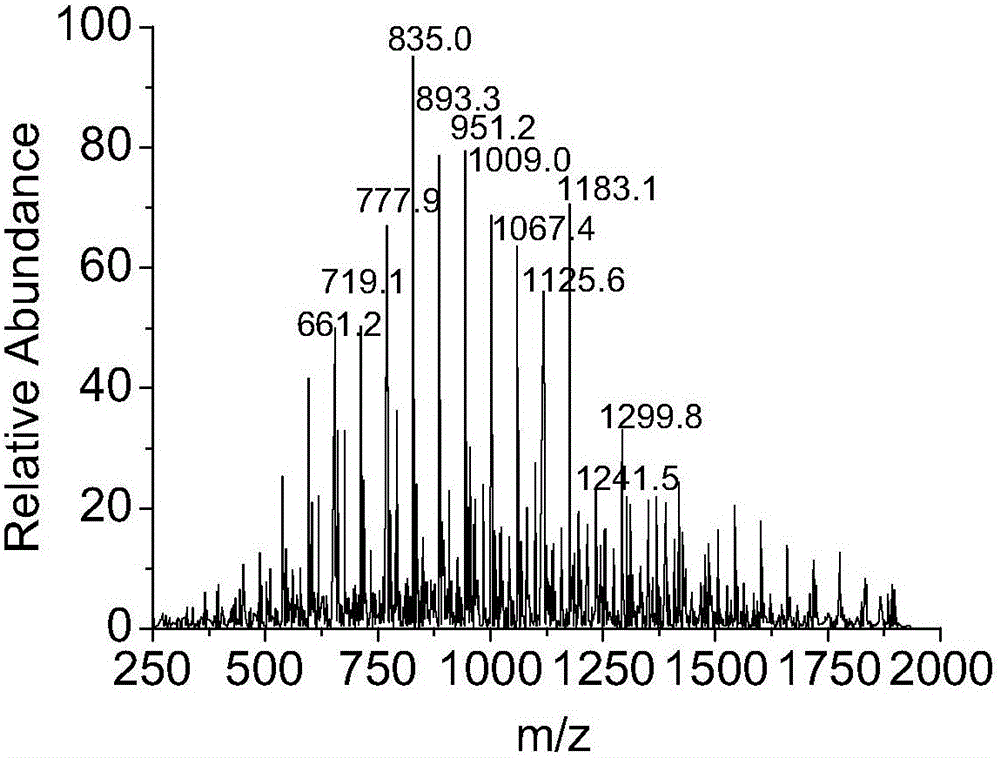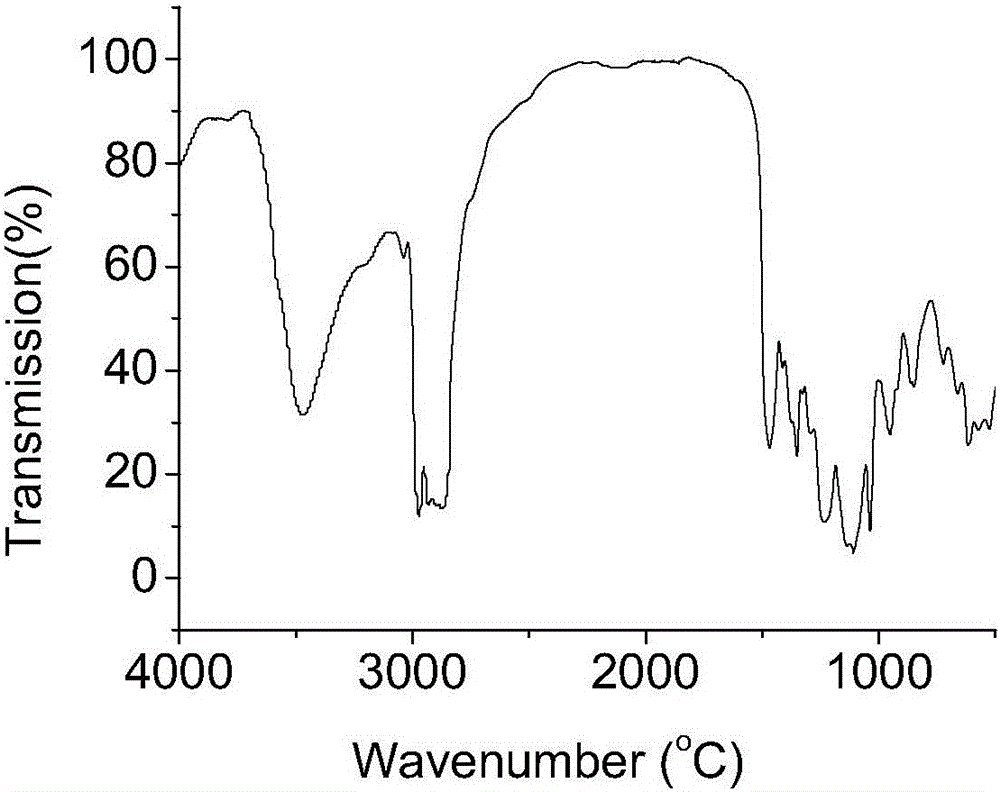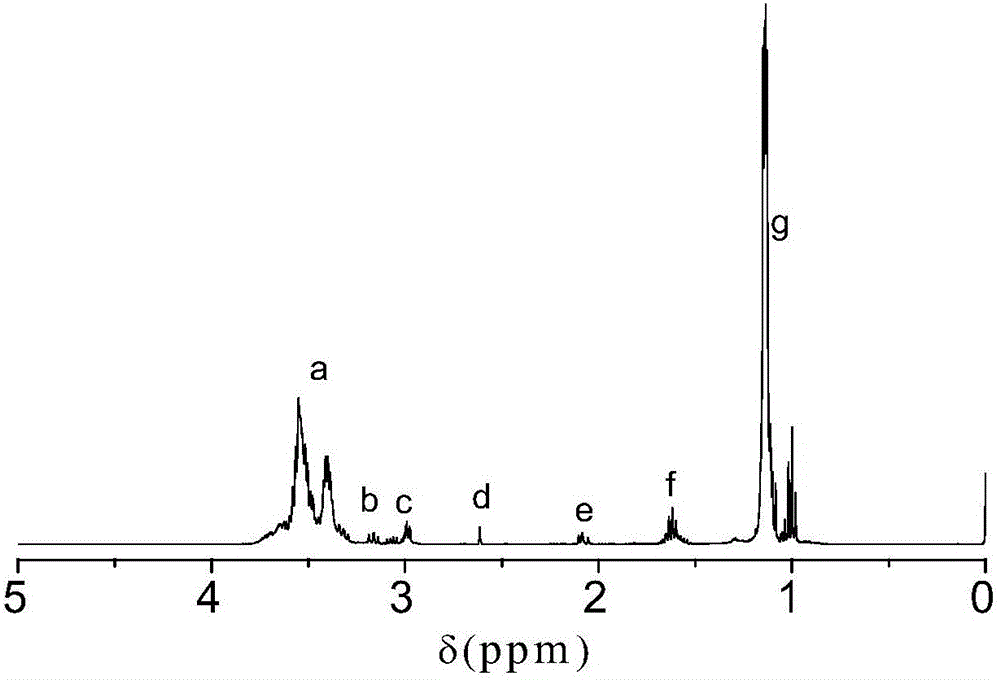A polyether hydrophilic modifier with zwitterionic groups, its preparation method, and a water-dispersible polyisocyanate composition
A hydrophilic modifier and polyisocyanate technology, applied in the field of water-dispersible polyisocyanate compositions, can solve the problems of inability to effectively protect isocyanate groups, consume isocyanate groups, prolong the pot life of polyisocyanates, etc., and achieve good water solubility. Dispersibility, water absorption reduction, effect of short drying time
- Summary
- Abstract
- Description
- Claims
- Application Information
AI Technical Summary
Problems solved by technology
Method used
Image
Examples
Embodiment 1
[0038] As shown in the reaction formula (1), diethylamine was used as the initiator and double metal cyanide complex (DMC) was used as the catalyst to catalyze the ring-opening polymerization of propylene oxide. The synthesis was carried out in a clean and dry 1L stirred autoclave. First place 1.2g of double metal cyanide catalyst in the autoclave, and then repeatedly vacuumize and inflate the autoclave with nitrogen. Then, 45.8 g of chromatographically pure grade (purity ≥ 99.5%) diethylamine was added into the kettle at room temperature as a starting agent to synthesize monofunctional polyether. At room temperature, 3.6 bar nitrogen was introduced. Then, 40 g of propylene oxide was pressed in, and the temperature of the reactor was gradually raised to 125° C. for induction reaction. When the temperature rises above 5°C, it indicates that the induction reaction is over. 386 g of propylene oxide were gradually added to the autoclave over the next 3 hours and 30 minutes. Th...
Embodiment 2
[0054] The polyether monoalcohol with tertiary amino groups was synthesized by using the same synthetic route and conditions as in Example 1. Place 1.0 g of a double metal cyanide catalyst in the autoclave, and then replace the air in the autoclave with nitrogen. At room temperature, 77.5 g of chromatographically pure grade diethylamine was added into the kettle as a starting agent. At room temperature, 3.2 bar nitrogen was introduced. Then, 60 g of propylene oxide was pressed in, and the temperature of the reactor was gradually raised to 125° C. to induce the reaction. When the temperature rises above 5°C, it indicates that the induction reaction is over. 506 g of propylene oxide were added to the autoclave over the next 4 hours and 15 minutes. The mixture was stirred and reacted for 50 minutes. The tertiary aminopolyether monol was collected by filtration with exhaust at 105°C and 11 mbar.
[0055] Take 122g of the tertiary amino polyether sample prepared above and put ...
Embodiment 3
[0066] Put 84.6g of sodium 2-chloroethanesulfonate and 210ml of water in a 1000ml three-necked flask, heat the flask to 60°C, and add the tertiary aminopolyether sample prepared in Example 2 dropwise to the three-necked flask under stirring 215g, reacted at this temperature for 24h to obtain zwitterionic polyether monoalcohol. The reaction is shown in formula (5).
[0067] (5)
[0068] The moisture in the reaction was distilled off under reduced pressure, 260 ml of isopropanol was added to dilute the mixture, and 80 g of magnesium silicate adsorbent was added to the mixture. The adsorbent, sodium 2-chloroethanesulfonate and sodium chloride in the mixture were removed by filtration with a plate and frame filter press, and the isopropanol solvent in the mixture was removed by distillation under reduced pressure. The obtained polyether was dissolved in deionized water to prepare a solution with a concentration of 30%. Use strong acid cation exchange resin (001×7 model) to fi...
PUM
| Property | Measurement | Unit |
|---|---|---|
| viscosity | aaaaa | aaaaa |
| hydroxyl value | aaaaa | aaaaa |
| viscosity | aaaaa | aaaaa |
Abstract
Description
Claims
Application Information
 Login to View More
Login to View More - R&D
- Intellectual Property
- Life Sciences
- Materials
- Tech Scout
- Unparalleled Data Quality
- Higher Quality Content
- 60% Fewer Hallucinations
Browse by: Latest US Patents, China's latest patents, Technical Efficacy Thesaurus, Application Domain, Technology Topic, Popular Technical Reports.
© 2025 PatSnap. All rights reserved.Legal|Privacy policy|Modern Slavery Act Transparency Statement|Sitemap|About US| Contact US: help@patsnap.com



